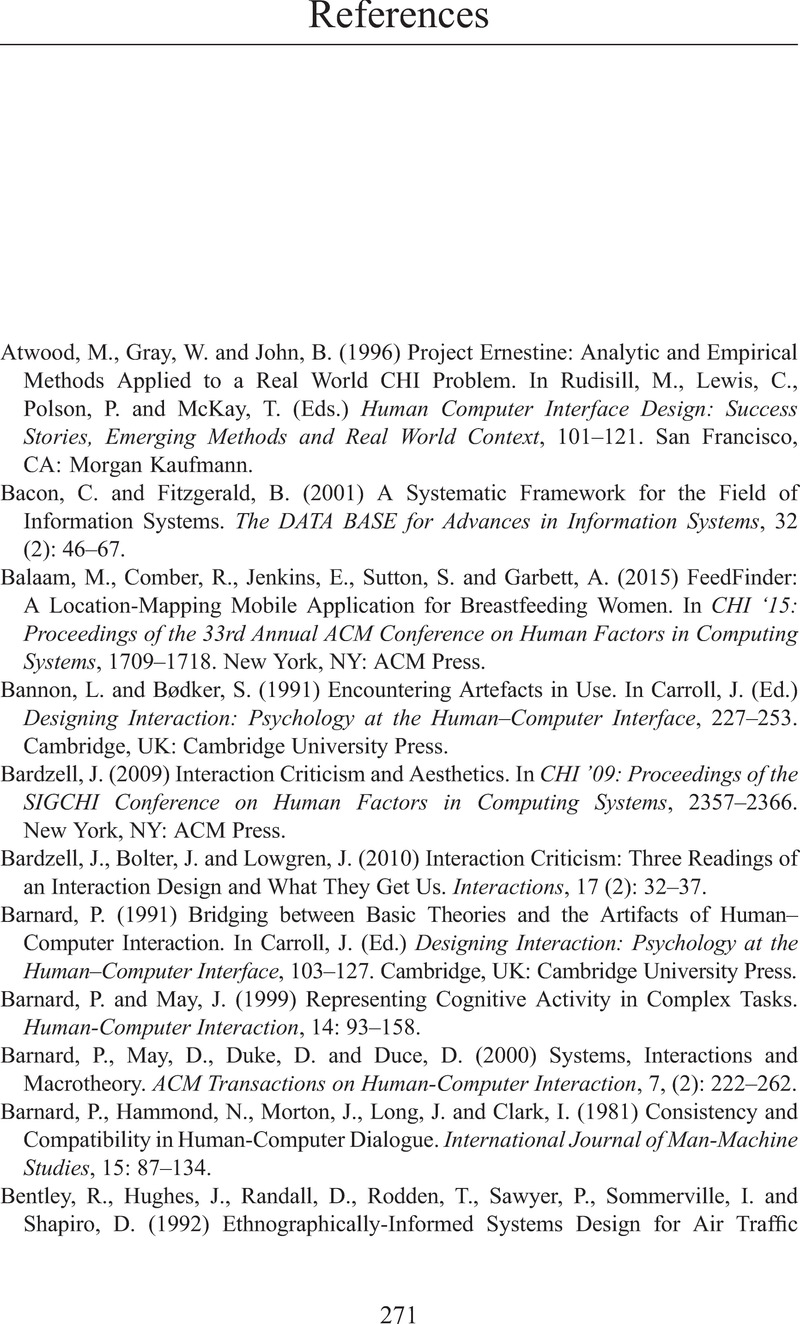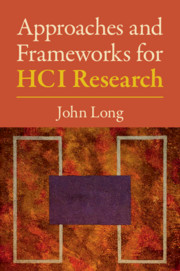Book contents
- Approaches and Frameworks for HCI Research
- Approaches and Frameworks for HCI Research
- Copyright page
- Dedication
- Contents
- Preface
- Acknowledgements
- 1 Approaches and Frameworks for HCI Research
- 2 Approaches to HCI Research
- 3 Frameworks for HCI Research
- 4 Innovation Approach and Framework for HCI Research
- 5 Art Approach and Framework for HCI Research
- 6 Craft Approach and Framework for HCI Research
- 7 Applied Approach and Framework for HCI Research
- 8 Science Approach and Framework for HCI Research
- 9 Engineering Approach and Framework for HCI Research
- 10 General Approach and General Framework for HCI Research
- 11 Validating General Approach and General Framework for HCI Research
- 12 Assessing General Framework against Other HCI Frameworks
- 13 Assessing General Framework against HCI Theories
- 14 Methodological Component for General Framework
- 15 Case Studies for General Framework
- 16 Approaches and Frameworks for HCI Research: Lessons Learned and Lessons Remaining
- Postscript
- References
- Index
- References
References
Published online by Cambridge University Press: 24 February 2021
- Approaches and Frameworks for HCI Research
- Approaches and Frameworks for HCI Research
- Copyright page
- Dedication
- Contents
- Preface
- Acknowledgements
- 1 Approaches and Frameworks for HCI Research
- 2 Approaches to HCI Research
- 3 Frameworks for HCI Research
- 4 Innovation Approach and Framework for HCI Research
- 5 Art Approach and Framework for HCI Research
- 6 Craft Approach and Framework for HCI Research
- 7 Applied Approach and Framework for HCI Research
- 8 Science Approach and Framework for HCI Research
- 9 Engineering Approach and Framework for HCI Research
- 10 General Approach and General Framework for HCI Research
- 11 Validating General Approach and General Framework for HCI Research
- 12 Assessing General Framework against Other HCI Frameworks
- 13 Assessing General Framework against HCI Theories
- 14 Methodological Component for General Framework
- 15 Case Studies for General Framework
- 16 Approaches and Frameworks for HCI Research: Lessons Learned and Lessons Remaining
- Postscript
- References
- Index
- References
Summary

- Type
- Chapter
- Information
- Approaches and Frameworks for HCI Research , pp. 271 - 277Publisher: Cambridge University PressPrint publication year: 2021



